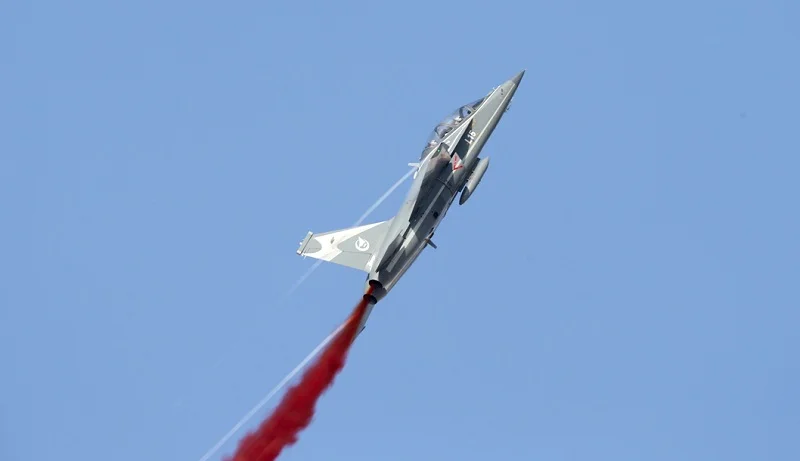The United Arab Emirates (UAE) is planning to purchase a dozen Chinese L-15 supersonic advanced trainer and light combat jets with more being considered in the future.
Experts said that the Chinese aircraft boasts advantages in both technical aspects and costs. Despite possible pressure from the US, analysts said they are optimistic that the deal will go through, Global Times reported on Saturday.
The UAE Ministry of Defense intends to buy 12 L-15 Chinese aircraft, with the option for 36 additional aircraft of the same type in the future, the ministry said on its Twitter account.
Talks with China’s National Aero-Technology Import and Export Corp have reached the final stage, and the contract will be signed soon, Tareq Al-Hosani, CEO of the Tawazun Economic Council, the UAE’s defense and security acquisitions authority, was quoted as saying.
In November 2021, the supersonic L-15 delivered a flight performance in addition to being on a static display at Dubai Airshow in the UAE, displaying the aircraft’s outstanding maneuverability and capabilities for both training and combat purposes.
The L-15 attracted interest from the UAE mainly because of its technical performance, as the Chinese aircraft is an advanced trainer jet that is second to none in the world, Wang Ya’nan, chief editor of Aerospace Knowledge magazine, told the Global Times.
Read More:
UAE buys 80 Rafale, 12 helicopters in $19bn arms deal
UAE becomes first country having 4.5-day working week
It can also carry weapons and serve as a light, multi-role combat aircraft, Wang said, noting that the plane is equipped with a full set of advanced electronic systems, and it comes with a wide range of munitions.
All of the technologies and systems, including engines, can be independently supplied by China instead of from a third country, and the L-15 is also used by the Chinese People’s Liberation Army under the designation of JL-10, Wang pointed out.
While the value of the possible deal was not disclosed, Wang said the L-15 has a superior cost performance compared with its competitors.
Wang said that as a trainer jet, the L-15 is no replacement for the F-35 fighter jet, and the move is unlikely to affect the UAE’s relations with the US fundamentally. But the purchase intention shows that the UAE does not necessarily have to rely on the US for military equipment, as it can also purchase European and Chinese equipment.ť
By announcing the intention before signing the contract with China, the UAE is likely to sound out the potential purchase’s impact, such as a possible response from the US, Wang said.
The timing of the signing and the number of aircraft involved could change, but it is hopeful that the deal will be signed, as trainer jets do not cause huge impact on regional security, Wang predicted.
In December last year, the United Arab Emirates signed a a $19 billion arms deal with France to acquire 80 Rafale fighter jets and 12 military helicopters.
“This contract cements a strategic partnership that is stronger than ever and directly contributes to regional stability,” the French presidency said in a statement after Macron and Abu Dhabi Crown Prince Sheikh Mohammed bin Zayed Al Nahyan (MBZ) signed the deal on the sidelines of the Dubai Expo 2020.
The F4 model Rafales, currently under development, will be delivered from 2027. Rafale would replace the Mirage 2000 fleet but is unlikely to displace the American-built F-35 as the UAE continues to hedge its security with two main suppliers, France and the United States.
Abu Dhabi also ordered 12 Caracal helicopters. It is the French code name for the H225M, the multi-role military version of the Super Puma.
Abu Dhabi’s Mubadala sovereign wealth fund also pledged eight billion euros ($9bn) in investments in French businesses, while the licence of the UAE capital’s branch of the Louvre art gallery was extended for 10 years to 2047.


